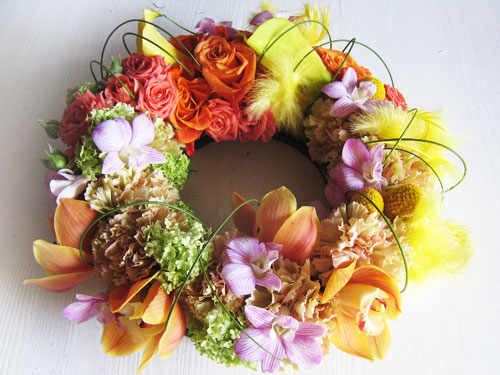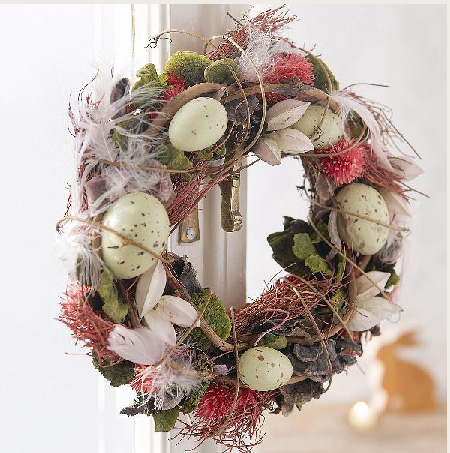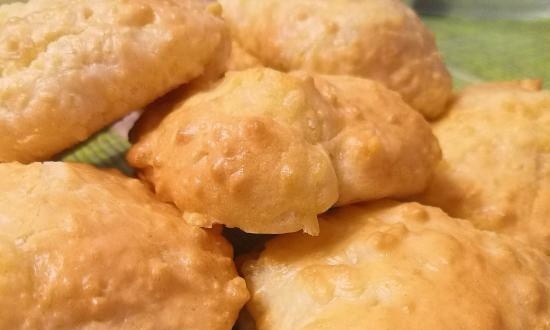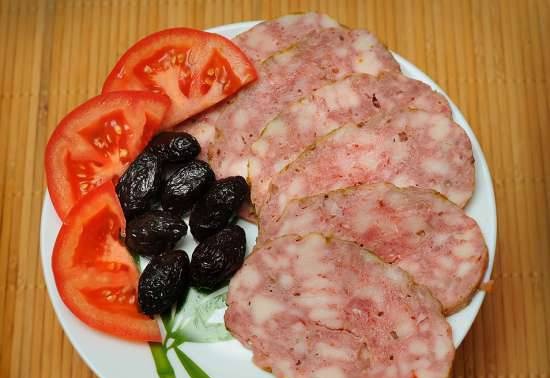"DELICIOUS" EASTER TABLE DECORWhen preparing for Easter week, consider both the holiday menu and the festive decoration of your home.
Easter is a bright holiday symbolizing rebirth, new life, and in order to emphasize the sublimity of feelings, which, of course, covers every believer, you should choose a warm color scheme for decorating the table.
Give preference to delicate spring flowers:
- pink, red (red is the color of love),
- blue (blue and blue are the colors of the sky, faith),
- yellow (yellow - as a symbol of vitality, joy, light),
- light green, green (green is the color of hope, the personification of nature and freshness),
- white neutral, which always looks solemn,
and other warm pastel shades, delicate shades of bright colors - all this variety of colors can find their rightful place on your festive table
Red is the color of love, which takes on a deeper meaning on Easter, symbolizing the boundless love of Jesus for all people whose sins He atoned for with His blood.
White, yellow, gold colors - colors of spirituality, light, purity
Yellow, along with red, is good for Easter decoration, because it symbolizes the sun, which gives life to all life on earth.
Lay a ceremonial tablecloth on the table, decorate the table with vases with primroses, sprouts of greens and grains and blossoming twigs. Make an Easter bouquet: hang painted eggs, figurines of Easter gingerbread cookies in the form of birds, animals, bunnies or paper flowers and butterflies, and others on the branches of a tree in a vase.
Such compositions for your holiday table and your home will create a festive mood:
For example, a special dish was provided for colored eggs, in which wheat or watercress was germinated two weeks in advance. Such a clearing, in the young grass of which multi-colored testicles were hiding, was a special decoration of the table.
To grow the grass, you need to put some earth on a plate, mix with it the grains of wheat, oats or watercress, add water to the consistency of a liquid gruel and put in a warm place.
Young shoots will appear in a week. "Polyanka", conveniently located in the middle of the table, can replace the traditional flowers on the festive table.

It is great if there are spring flowers in the house on a holiday, collected and stylized in accordance with the triumph of the composition.
In Russia, the most popular Easter flowers were hyacinths and daffodils (they were even called Easter lilies). They were used to decorate tables, presented in Easter baskets.
Easter flowers are also considered - ram primroses, dandelions, mother-stepmother - however, all the first, usually really yellow spring flowers were called so.
To decorate Temples, many priests still prefer hydrangea, especially white, and often place it near the shroud.
Primroses, tulips are also popular (they also resemble eggs in shape), violets, lilies of the valley, snowdrops, viburnum flowers, forsythia, prunus, ranunculus.
We must not forget about roses and carnations.
According to the religious symbolism, carnations are the flowers of Christ, therefore, it is often from 33 white carnations that the garland is assembled on the shroud: according to the number of earthly years of the Savior's life and in memory of the white sheet (shroud), which was wrapped around him, having been removed from the cross.
Roses are a very common decoration for tables, cakes, icons. Earlier, when living roses were inaccessible to many, artificial roses were made for Easter, often paper ones, dyed in raspberry red.
Potted plants, especially flowering plants - cyclamens, hyacinths, clivias, roses, violets, Kalanchoe, etc. are widely used, especially for Easter baskets and compositions.
Easter composition on the table
 Easter bouquets
Easter bouquets - a whole series of bouquets for a gift and bouquets for decorating Easter cake. In terms of shape, color and choice of plants, the Easter bouquet for a gift is sustained in the tradition of Easter and is less focused on gender, age and preferences of the addressee.
Therefore, it is often gathered round, with flowers typical for Easter, feathers, shells, willow, figurines of hares, lambs, various birds, as well as butterflies, beetles and dragonflies.
In recent years, bouquets on a wide variety of frames have become very popular and, above all, the "nest" bouquet. It really gathers on a frame made of branches that resembles a bird's nest. A bouquet for Easter cake, usually small in size, is collected on a hairpin, most often wooden, on which it is then attached to the cake.
Easter wreath - desktop, wall-mounted, suspended. It symbolizes infinity and eternal life, given by the sacrifice of Jesus Christ. Collected from spring flowers and branches, with eggs, shells, ribbons, feathers and other attributes.
Used as a table decoration (often around the Easter cake), interior decoration and as an Easter gift.
Earlier, Easter wreaths, in addition, were worn to cemeteries in Radonitsa - the day of the Easter cycle among the Orthodox, when the dead are commemorated.
Wreath on the Easter table  Hanging Easter wreath on the wall
Hanging Easter wreath on the wall Easter slide
Easter slide - specially grown greens for Easter from cereal seeds, most often oats, or other fast-growing seeds, for example, watercress.
The seeds were thickly “smeared on a wet cloth that covered the base in the form of a hill (pyramid or cone) and often watered. The hill that had grown, as if covered with spring grass, was put on a plate, stand or basket on the Easter table and covered with colored eggs.
The Easter slide was also called the sloping "slides" specially made of boards, sometimes similar to shallow gutters. The shape of the mountain appeared in Easter traditions for a reason. Almost every nation has sacred mountains (sometimes it is the abode of the gods), which history, legends and myths associated with the most important events: Olympus, Tabor, Sinai, Fujiyama, etc. Both the Easter slide and the greens sprouting from seeds are symbols of proximity to God, Resurrection, Revival and Hope (green).
Easter basketWhat must be in an Easter basket?Archpriest Petr Landvitovich from the Church of St. John the Evangelist in Kiev answers.
- First of all - colored eggs as a symbol of Easter, necessarily meat and dairy products: ham, sausages, cheese, butter ... And, of course, Easter cakes. Wine can be sacred, but vodka is not worth it. Recently, they have come to bless them with children, because there are a lot of sweets and chocolate eggs in the baskets. But before, sweets were not put in baskets, it was not accepted. Fruits can be sacred, recently a lot of exotic things have appeared - pineapples, bananas, mangoes. And, in general, parishioners know little about this, since they rarely go to church. On this occasion, we, priests, even have an anecdote. A man in the church is indignant: “Whenever you come, they always sanctify a paska. Are there really no other holidays? " (Laughs) An anecdote of everyday life: after all, indeed, people do not go to church all year round, they only drop in at Easter. (Archpriest Peter Landvitovich from the Church of St. John the Divine.)
 Easter tree
Easter tree - a decoration that imitates a tree - like the Tree of Life, the Tree of Knowledge, Good and Evil, standing in Paradise. It can be of any size - from small gift, table compositions to large interior objects.
The works are performed in any floristic style and from any material; they can resemble real trees or be stylized.
In some European countries ("Easter tree" - sometimes it is just a high pole with transverse slats at the top, which is decorated with wreaths, ribbons, flowers - is placed in yards, on the streets and carried during Easter processions and festivities.
In Russia until the 17th century, in the procession of the patriarch, an Easter tree, decorated with artificial flowers and fruits, was carried on a donkey on a donkey; it was called the “royal willow”.
 Easter bunny
Easter bunny - one of the obligatory attributes of Easter and Easter floristry in almost all countries of Western Europe, especially in Catholic and Evangelical.
The hare (and sometimes the rabbit), famous for its fertility, appeared in Easter bouquets, compositions, wreaths, showcases, decorations and gifts as a symbol of fertility.
His presence promises prosperity, good harvest and success in business. There is another explanation as well. Faster than others, a running hare can be the first to bring good news to people, and it was as a messenger that he appeared in Easter paraphernalia.
This version is also confirmed by the ancient legend about how the Moon, feeling sorry for the mother who had lost her son, sent a swift hare with the joyful news that her son would rise again. The hare came running very quickly, but on the way forgot what was said to him, for which he was forever left with a split lip.
 Easter postcard
Easter postcard - a greeting card, often with the words "Christ is Risen!" and Easter stories.
Own postcards in Russia began to be printed only at the end of the 19th century, therefore, early Easter postcards often depicted the attributes of Easter accepted in Western Europe, for example, hares, birds, etc.
These postcards were sent by mail, left during visits, and attached to gifts. Handmade postcards were especially appreciated.
 “One could assume that Easter hares, chickens and lambs are only a product of our“ age of atheists ”But this is not so. I want to show you some European Easter cards from our home collection. "
“One could assume that Easter hares, chickens and lambs are only a product of our“ age of atheists ”But this is not so. I want to show you some European Easter cards from our home collection. "
Check out the website listed on the postcard and see all the glory of Easter cards in the past! You'll like it!
Birds - one of the most widespread in almost all countries element of Easter decoration in the form of figurines of various birds, most often storks, as well as their nests, eggs, feathers. The bird is a messenger, a symbol of the Spirit, the rebirth of nature.
Hand willow - "Hand willow" - all kinds of branches, decorated with made flowers, fruits, berries, pods and even nuts.)
Palm Sunday: why are willow branches consecrated before Easter?
This question can be answered very simply. In the central part of Russia, the pussy willow is the only commonly available plant that came to life after winter and opened its tassels.
Palm branches, which are absent in our area, have been replaced with verbules, which are an obligatory attribute of the ancient Orthodox holiday in honor of the Lord's entry into Jerusalem. This event - the solemn entry of Jesus Christ into Jerusalem - begins the ascent of Christ to death and resurrection on the cross. The inhabitants of the holy city greeted Christ as the Messiah - with palm branches in their hands, hence the original name of the holiday - “Palm Sunday”.
 Candles are a symbol of light and Spiritual burning.
Candles are a symbol of light and Spiritual burning. They are used in all Easter floristic work, most often in the form of an egg or a hare.


 Krashenki
Krashenki - Easter colored eggs. There are many ways of dyeing Easter eggs: herbs, cabbage leaves, onion peels, special dyes, variegated threads, etc. In floristic work, not natural, but industrially produced dyes of a variety of colors, including fashionable ones, are often used.
Easter eggs - so called Easter eggs, painted with some kind of, often symbolic ornament, pattern, or with text of a religious nature, for example, quotes from the Holy Scriptures.
Krashenki and Pysanka 






